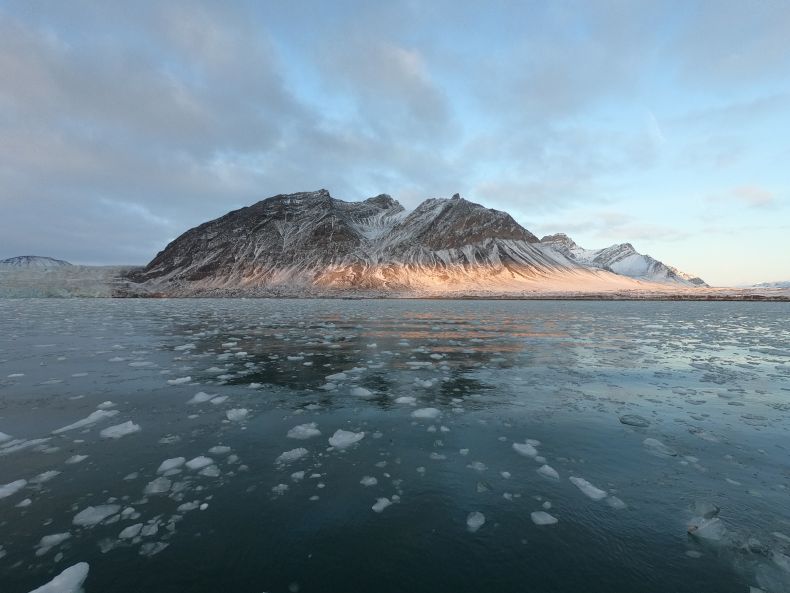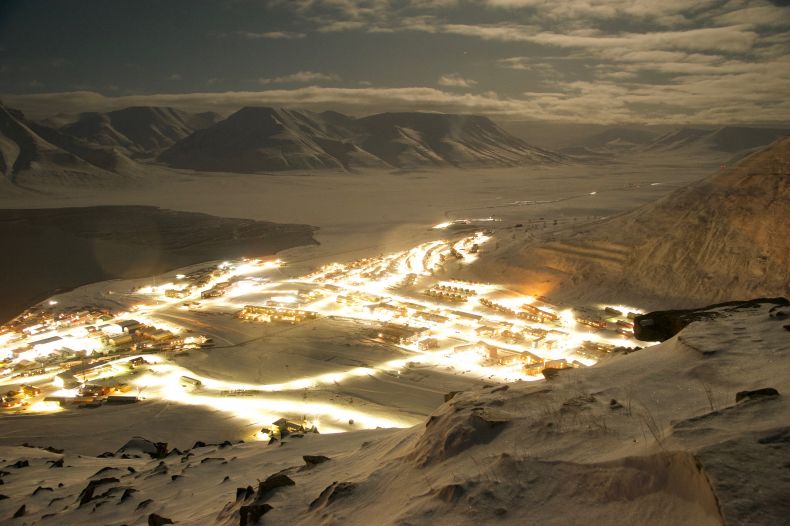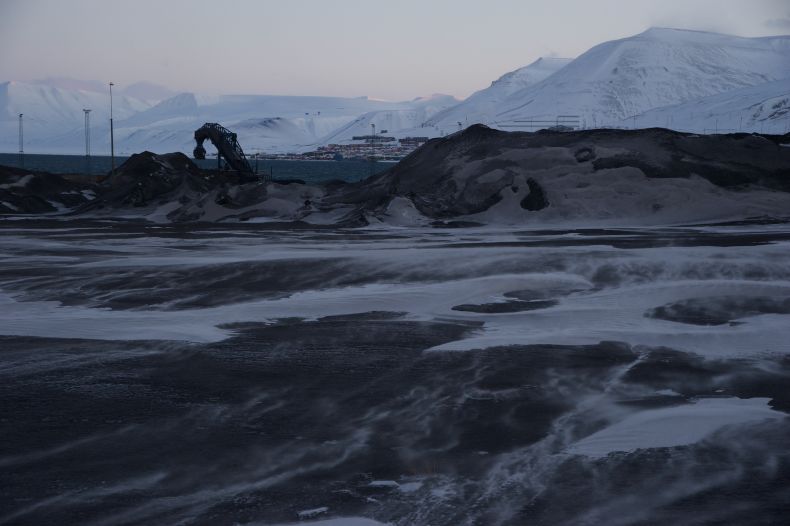The author(s) will give a talk
Understanding resilience and long-term environmental change in the High Arctic: Narrative-based analyses from Svalbard (SVALUR)
1 INSTAAR, CU-Boulder and Stefansson Arctic Institute, Akureyri, Iceland
2 NORCE Norwegian Research Centre, Bjerknes Centre for Climate Research, Bergen, Norway and INSTAAR, CU-Boulder
3 Swedish University of Agricultural Sciences (SLU), Uppsala, Sweden
4 Swedish University of Agricultural Sciences (SLU), Uppsala, Sweden
The project "Understanding Resilience and Long-Term Environmental Change in the High Arctic: Narrative-Based Analyses from Svalbard (SVALUR)" focuses on the Norwegian archipelago of Svalbard in the Arctic Ocean as an ideal site for learning what resilience may mean when short-term residency, compromising place-based knowledge generation, is the norm. SVALUR means "cool" or "cold" in Icelandic and the project may be seen in the context of the profound changes taking place in the world's most northern biome. Because of these changes, environmental monitoring in the Arctic is more urgent than ever. Investments made to capture both current state and changes in the natural environment are extensive; however, the locations at which such monitoring takes place are few, and, with the exception of monitoring of weather and climate conditions, cover relatively short periods of time (1–2 decades). More importantly, environmental monitoring typically concerns highly specific parameters and thus fails to generate the holistic understanding needed for interpreting and responding to change. Environmental understanding held by people living, working in, and exploring extreme environments in the Arctic is, by contrast, multifaceted and relational, and can relate to shorter as well as longer periods of time (Berkes and Berkes, 2009). In order to contribute to such issues, the SVALUR project was submitted to the Belmont Forum call of 2019 (in association with other funding bodies including the National Science Foundation of the USA) which emphasised the Exploration and Explanation of Resilience in Rapidly Changing Arctic Systems (https://www.belmontforum.org/news/arctic-announcement).
Svalbard's history of human use and habitation began in the 18th and 19th centuries when it was an important focus of the whaling industry. Subsequently, coal mining settlements were established. In 1925, the "Svalbard Treaty" came into effect and granted Norway sovereignty of the archipelago. In more recent times, there has been an increased focus on scientific endeavours. In 2016, Svalbard had a population of 2,667, primarily Norwegians, but of the total there were 423 Russians and Ukrainians, 10 Polish and 322 other non-Norwegian residents. Svalbard thus lacks Indigenous communities steeped in traditions and rich in the knowledge of human-nature relationships built up over many generations. Instead, current society is mostly fluid, with people living on Svalbard for several years to then return to their respective home countries, to continue their former lives. SVALUR is innovative in that it aims to draw upon the environmental understanding of people currently living, working and exploring in the region. Compared with scientific monitoring, such knowledge is rarely utilized, thus hindering knowledge generation and use in Arctic areas subject to rapid environmental change. SVALUR aims for transdisciplinarity through the inclusion of stakeholders and societal actors and by using co-production of knowledge to directly share understanding of environmental and other changes with both local inhabitants and visitors (tourists and scientists). Emphasis is on the three permanent settlements on Svalbard, all located on the west coast of the island of Spitsbergen: Longyearbyen, Barentsburg and Ny-Ålesund. The surroundings of these localities, together with Hornsund, are where monitoring efforts are focused. Here we are mapping out the results of long-term monitoring of climate (atmosphere, land and ocean) and marine and terrestrial ecosystems, to be compared with narratives of environmental changes from scientists and other residents.
The overarching research approach of SVALUR is thus to generate a holistic understanding of environmental change based on a variety of tools and methods and to develop these through a complementary partnership of project team members and stakeholders. This will be achieved through: i) employing methods including in-depth interviews, document analysis and web-based story mapping; ii) comparison of resultant information with environmental monitoring data in terms of overlap and potential synergies; iii) engaging in two-way communication between the project team and inhabitants and visitors to Svalbard regarding shared understanding of what resilience may mean when short-term residency, compromising place-based knowledge generation, is the norm; and iv) facilitating the mobilization of such knowledge in order that stakeholders have the opportunity to become more active agents for change. Because of the Covid-19 pandemic it has not been possible to make planned research visits to Svalbard so the project focus has shifted to concentration on meetings and consultations that can take place virtually.
SVALUR findings will provide valuable, holistic insights into long-term environmental change based on ‘living memory’, whilst at the same time pinpointing how current monitoring programmes can become more relevant to people’s experiences and optimize their importance to people living in and visiting the High Arctic. Bringing together perceptions of environmental change derived from monitoring and narratives is pertinent to any part of the Arctic (Moezzi et al, 2017; Paschen and Ison, 2014). However, it is essential to focus on local conditions in order to contribute more meaningfully to the global whole. The increasing levels of transience throughout the Arctic make developing ways in which narrative-based understanding can complement scientific monitoring even more pressing. SVALUR will derive research methods that are holistic and co-owned, and vital for the wellbeing of both current and future generations, as well as for policy and decision-making. In short, SVALUR will: i) advance the understanding of Arctic resilience and long-term environmental change; ii) inform decision making; and iii) translate the understanding that is gained into solutions for resilience. The project team is highly interdisciplinary, and covers a wide range of focus areas, including: Arctic ecology; climatology and sea-ice studies; environmental history; resilience studies; regional environmental change; environmental governance studies; environmental communication; and environmental humanities. SVALUR is led by René van der Wal, Arctic ecologist, of the Swedish University of Agricultural Sciences (SLU) with Astrid Ogilvie and Martin Miles representing the Instititute of Arctic and Alpine Research (INSTAAR) at the University of Colorado, Boulder, USA. For more information on the project and details of the other team members see https://www.slu.se/svalur. The project also cooperates closely with the Svalbard Social Science Initiative (SSSI) see https://svalbardsocialscience.com/.
Berks, F. and Berks, M.K., 2009, Ecological complexity, fuzzy logic, and holism in indigenous knowledge: Futures, v. 41, p. 6-12.
Moezzi, M. Janda, K.B. and Rotmann, S., 2017, Using stories, narratives, and storytelling in energy and climate change research: Energy Research and Social Science, v.31, p.1-10.
Paschen, J.-A. and Ison, R., 2014, Narrative research in climate change adaptation—Exploring a complementary paradigm for research and governance: Research Policy, v.43, p.1083-1092.

Fig 1.
Svalbard sea ice. Photograph courtesy of Zdenka Sokolícková and Jakub Zarsky.

Fig 2.
Longyearbyen, Svalbard. Photograph courtesy of Zdenka Sokolícková and Jakub Zarsky.

Fig 3.
Coal harbour, Svalbard. Photograph courtesy of Zdenka Sokolícková and Jakub Zarsky.